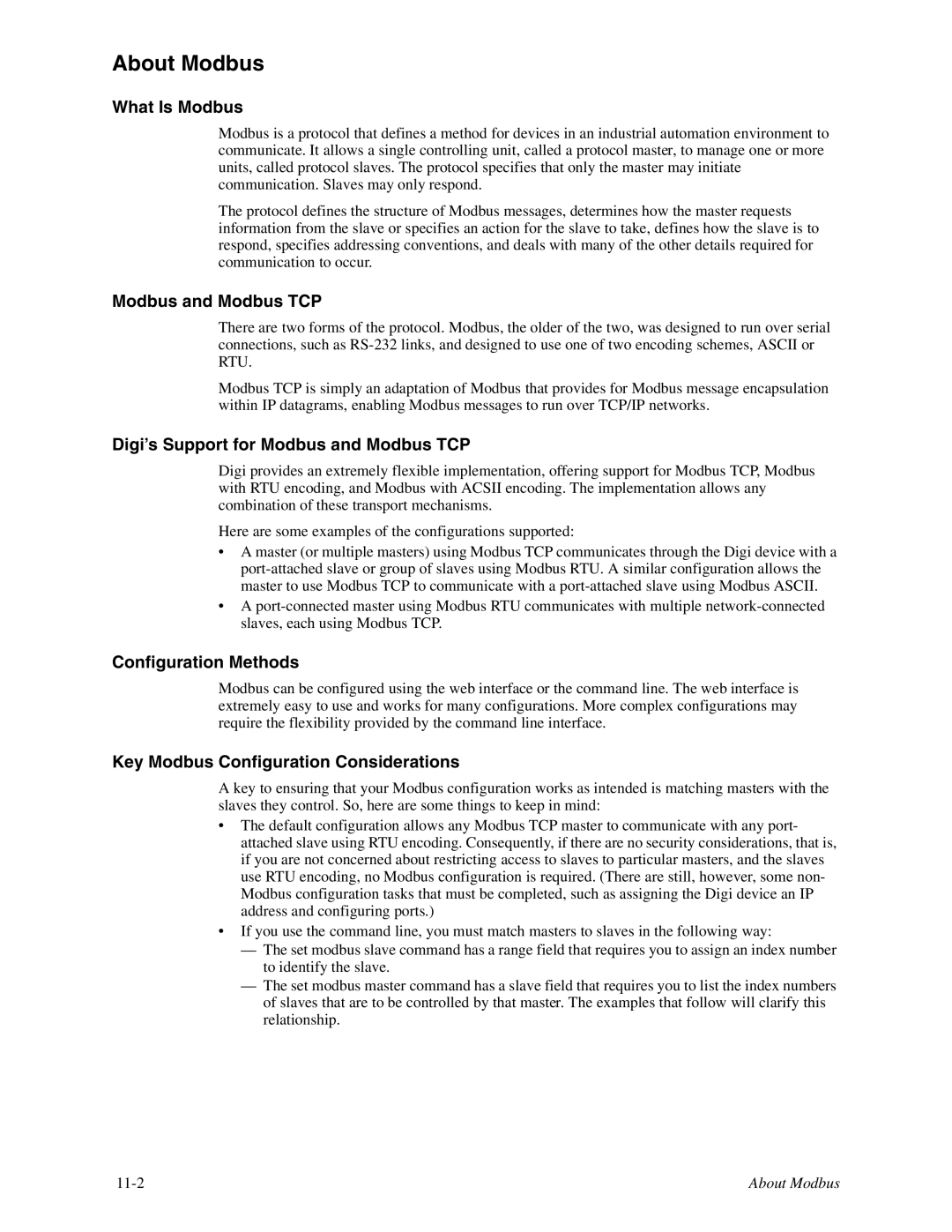About Modbus
What Is Modbus
Modbus is a protocol that defines a method for devices in an industrial automation environment to communicate. It allows a single controlling unit, called a protocol master, to manage one or more units, called protocol slaves. The protocol specifies that only the master may initiate communication. Slaves may only respond.
The protocol defines the structure of Modbus messages, determines how the master requests information from the slave or specifies an action for the slave to take, defines how the slave is to respond, specifies addressing conventions, and deals with many of the other details required for communication to occur.
Modbus and Modbus TCP
There are two forms of the protocol. Modbus, the older of the two, was designed to run over serial connections, such as
Modbus TCP is simply an adaptation of Modbus that provides for Modbus message encapsulation within IP datagrams, enabling Modbus messages to run over TCP/IP networks.
Digi’s Support for Modbus and Modbus TCP
Digi provides an extremely flexible implementation, offering support for Modbus TCP, Modbus with RTU encoding, and Modbus with ACSII encoding. The implementation allows any combination of these transport mechanisms.
Here are some examples of the configurations supported:
•A master (or multiple masters) using Modbus TCP communicates through the Digi device with a
•A
Configuration Methods
Modbus can be configured using the web interface or the command line. The web interface is extremely easy to use and works for many configurations. More complex configurations may require the flexibility provided by the command line interface.
Key Modbus Configuration Considerations
A key to ensuring that your Modbus configuration works as intended is matching masters with the slaves they control. So, here are some things to keep in mind:
•The default configuration allows any Modbus TCP master to communicate with any port- attached slave using RTU encoding. Consequently, if there are no security considerations, that is, if you are not concerned about restricting access to slaves to particular masters, and the slaves use RTU encoding, no Modbus configuration is required. (There are still, however, some non- Modbus configuration tasks that must be completed, such as assigning the Digi device an IP address and configuring ports.)
•If you use the command line, you must match masters to slaves in the following way:
—The set modbus slave command has a range field that requires you to assign an index number to identify the slave.
—The set modbus master command has a slave field that requires you to list the index numbers of slaves that are to be controlled by that master. The examples that follow will clarify this relationship.
About Modbus |
